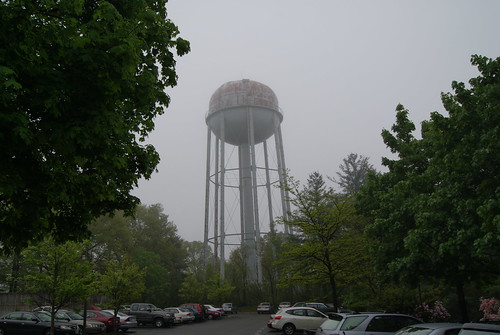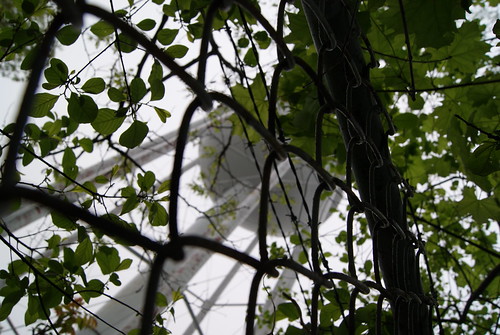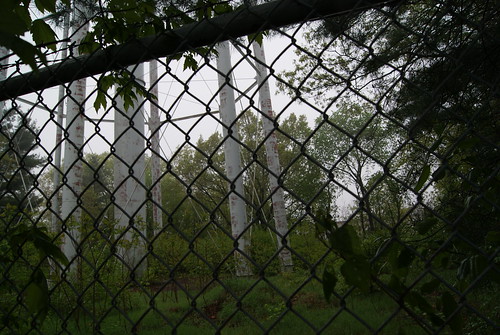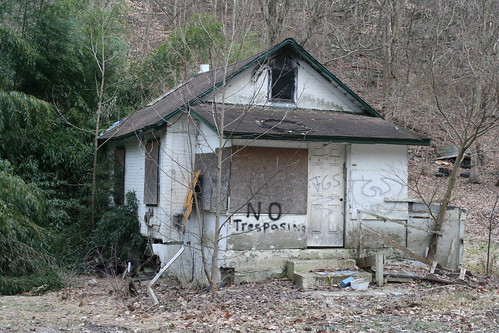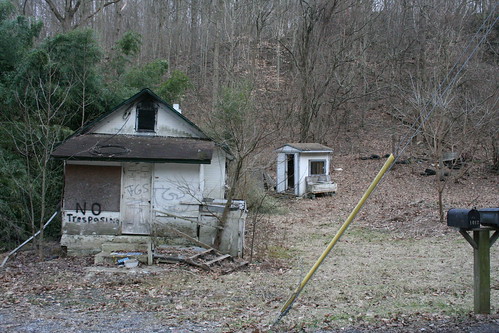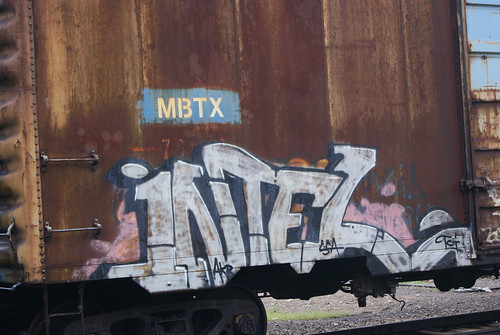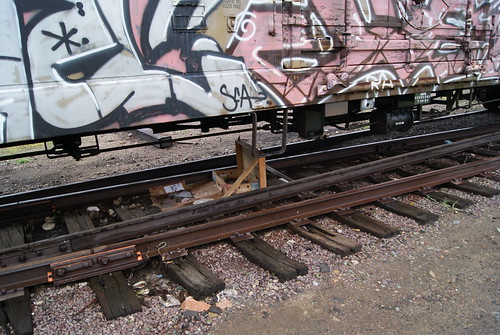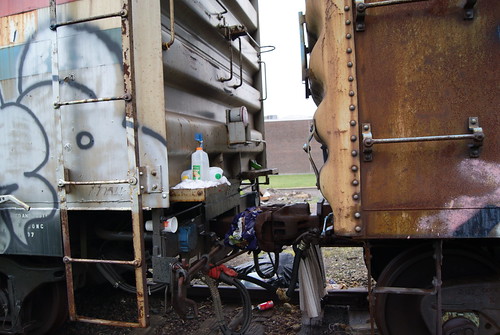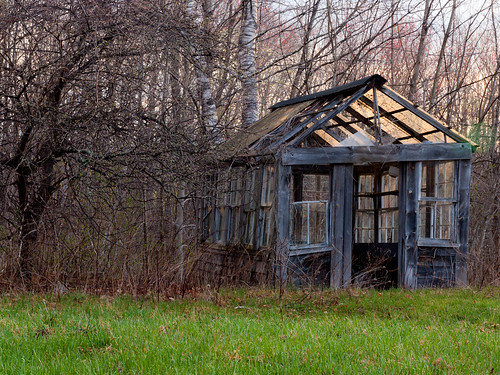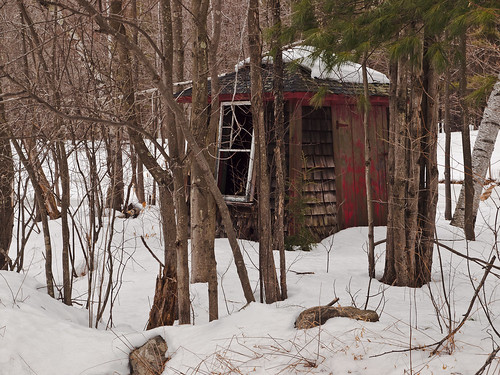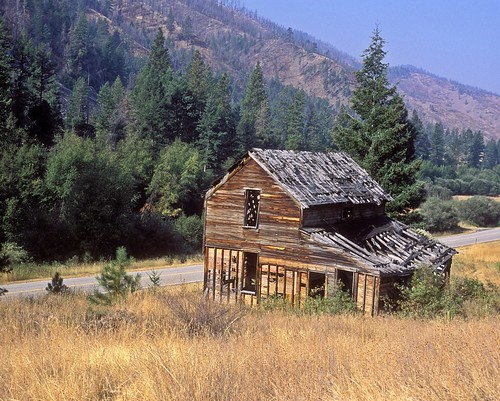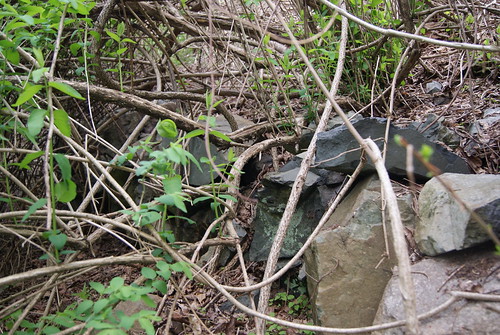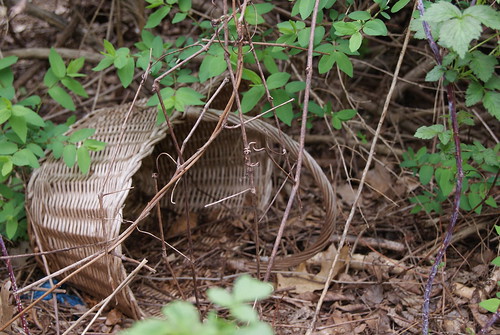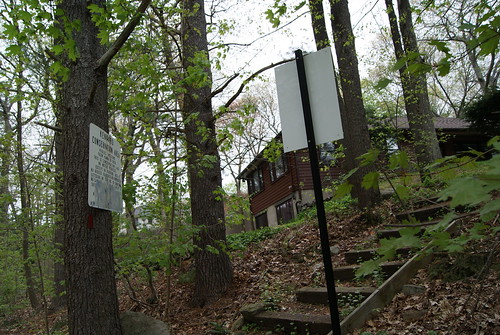From Dave Brigham:
I love baseball. Always have, always will. I'm a lifelong Red Sox fan; I played Little League, Babe Ruth, and, when I turned 40, old-guy baseball. I coached my son's first Little League team last year, and go to every one of his games now to cheer him on and encourage him and his teammates.
So one recent day as I was driving past Officer Bobby Braceland Playground in my adopted hometown of Newton, MA, I turned in to the parking lot to see what was beyond the nicely groomed baseball diamond I could see. I knew, from an earlier exploratory drive on the opposite side of the Charles River, in Needham, that there was something down the slope from the baseball field.
The first thing I saw was this frame for a batting cage.
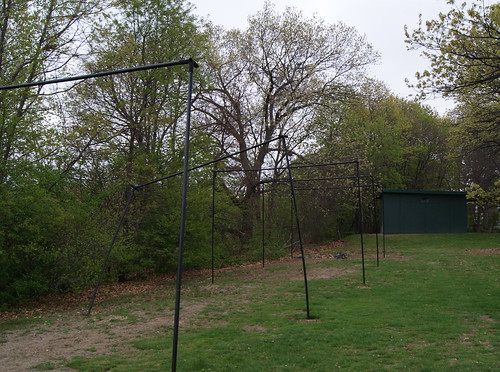
Little League is a pretty big deal in most corners of Newton, so I was surprised to see the condition of this cage. I thought at first that perhaps it just needed a little TLC and that it would be up before too long, witness to the sweet crack of wooden bats. But then I saw the netting, and realized nobody had taken any cuts here in quite some time, and likely wouldn't in the foreseeable future.

And judging by the nearby snack shack, nobody was grabbing a mid-game cheeseburger, Slushie or pack of sunflower seeds either.

I walked down the slope, past the sad batting cage, and toward the field at the bottom of the hill. There, I found a diamond that looked more like an emerald: all green. No more dirt.
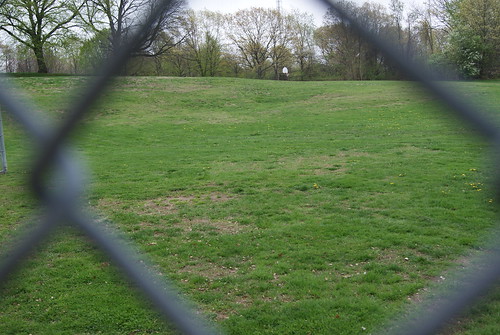
Heck, even the lone baseball I found had seen better days.
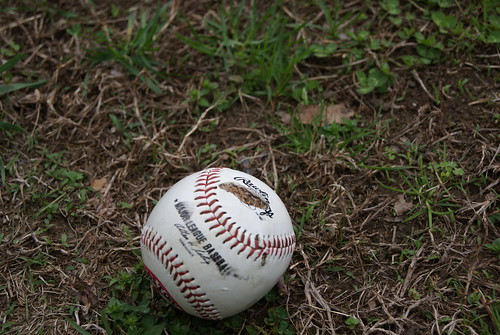
I wandered along the fence that separated the field from the Charles River, wondering how many times kids had to scramble over to fetch foul balls or home runs or ground-rule doubles. I almost ran into something jutting out of a bush. Took me a minute to recognize the elements of a bench upon which proud parents had once watched games.
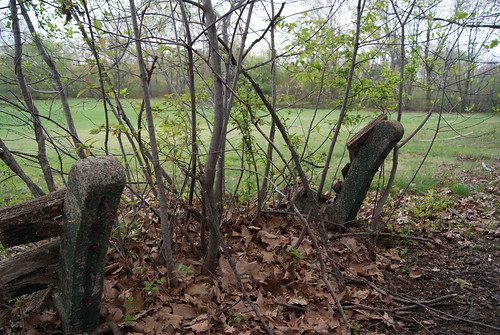
I was a little bummed. My mood wasn't helped by my conversation with a woman who was letting her dogs run through the outfield. "What are you taking pictures of?" she asked. "I like to take pictures of places that have been forgotten, like old buildings or baseball fields," I answered. Not my best answer.
"Oh...OK," she answered with a smirk.
"That's my thing," I answered flatly.
Still, I didn't leave feeling completely bummed about the fact that this field had evidently been turned into a dog park.
Because love was in the air.

